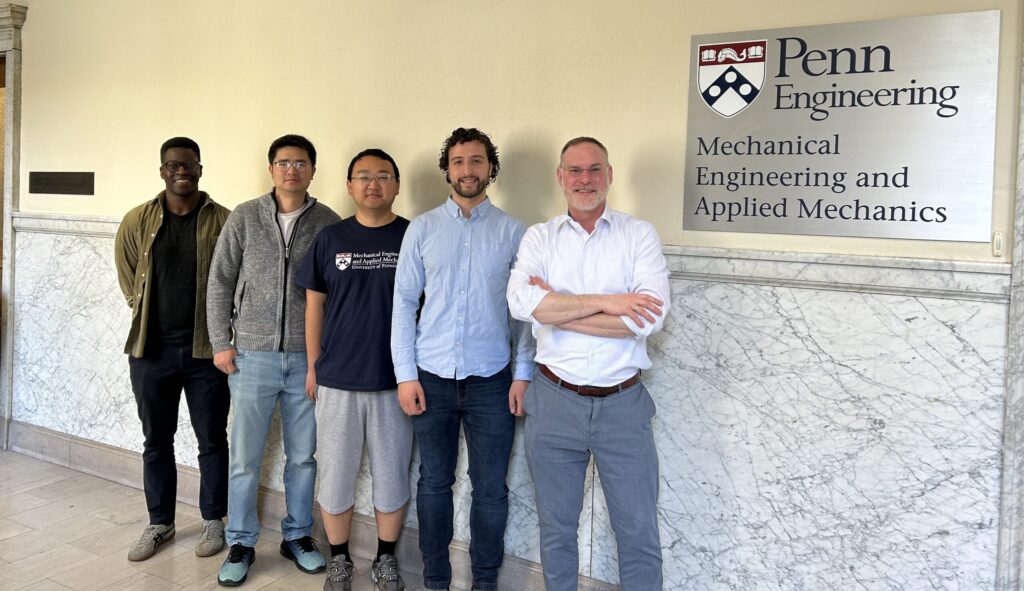When do materials bend and when do they break? For Ottman Tertuliano, AMA Family Assistant Professor in Mechanical Engineering and Applied Mechanics (MEAM), this question is one he normally investigates in human bones. But in a new study with Robert Carpick, John Henry Towne Professor in MEAM, Tertuliano turns to graphene, a tough, flexible and lightweight material extracted from graphite and made up of pure carbon, to answer this question.
Published in Nano Letters and led by Luc Capaldi, a MEAM Ph.D. student in Tertuliano’s lab with support from Carpick’s current and former team members Li Yuan, Cangyu Qu and Daniel Sanchez, the study describes a new, 3D auto-kirigami deformation of graphene, one of the strongest materials known to science, and how the process could be used to transform 2D graphene into 3D structures, paving the way for more diverse applications of this mighty material in the third dimension.

Graphene is famous in engineering circles for its suite of superpowers. As little as just a single atom thick, it’s stronger than steel, lighter than aluminum and conducts electricity better than copper. But in 2016, a paper by G.L.W. Cross at Trinity College Dublin hinted at another, more surprising property: when you indent graphene, it doesn’t just crack, it folds back onto itself and begins to tear in a predictable way. It self-organizes. Tertuliano and Carpick call it “auto-kirigami.”
“This was really intriguing,” says Tertuliano. “Because it meant the material was doing something we typically engineer from the outside. It was finding new shapes by itself.”
While others had noted this effect, the challenge remained: how could engineers see it happening, and more importantly, learn to control it?
Observing the process was only made possible through collaboration.
“My lab has been studying nanoscale friction, adhesion and mechanics for several years, including for 2D materials and layered materials like graphene and graphite,” says Carpick. “We wanted to know what happens when graphene and graphite are broken by poking them with a sharp indenter, but our method only lets us see the shape of the broken structure when the process is complete. We looked to Ottman and his lab’s nanoindenter to see what was happening in real time. When does it break? Does it change and evolve after it breaks? We couldn’t tell, but Ottman and Luc could because they can perform the experiments inside an electron microscope.”
